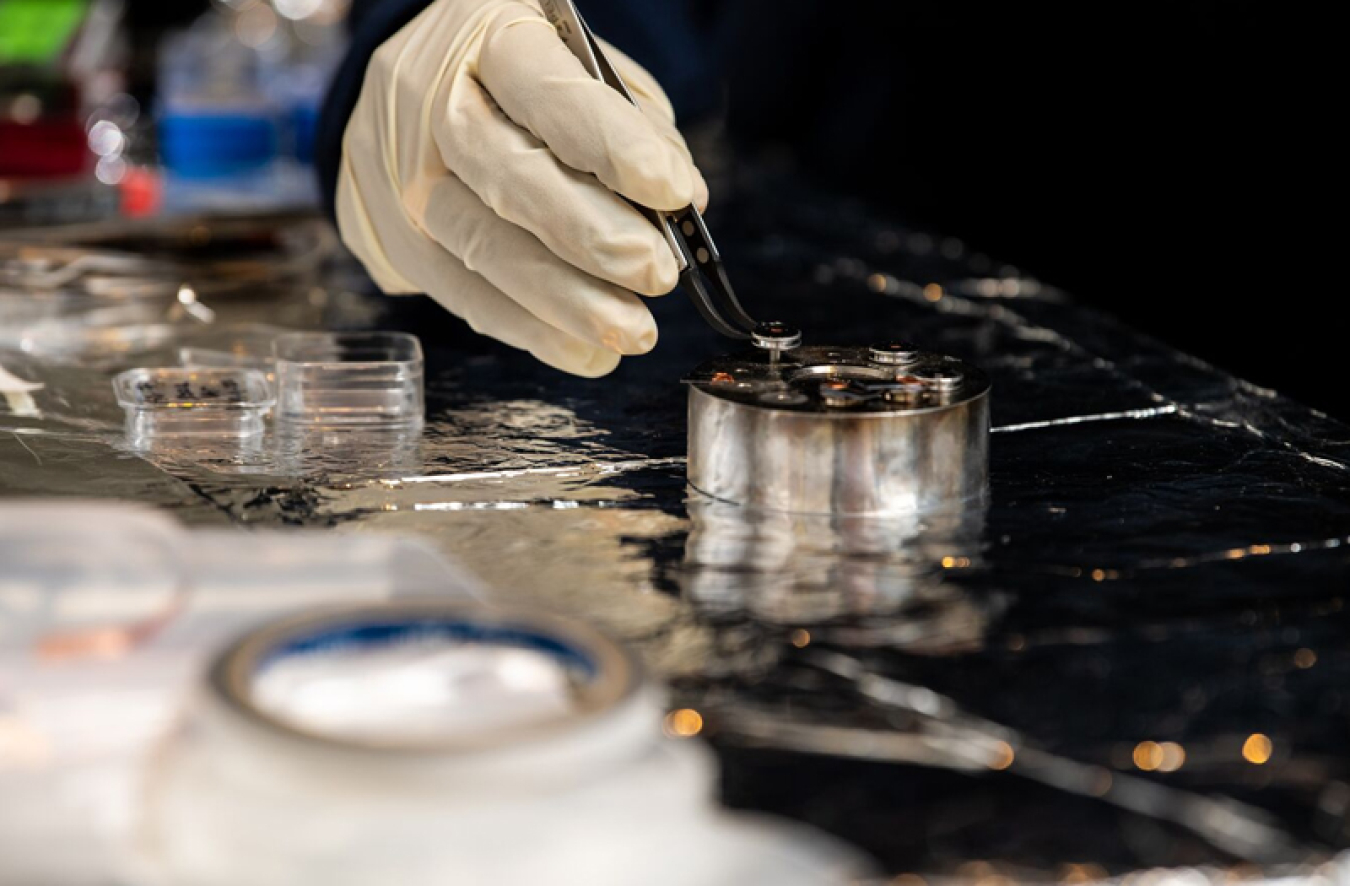The tools at the Environmental Molecular Sciences Laboratory provide deep insights into tiny organisms and their surrounding environments.
December 14, 2023
Scientific instruments provide a whole new spin on nature photography. While they may not be as striking as a sunset, microscopic images can provide scientists with new insights into ecosystems.
The Environmental Molecular Sciences Laboratory (EMSL), a Department of Energy Office of Science user facility, has an exceptionally large number of these powerful instruments. They have more than 200 different instruments available for researchers to use for free. To get access to these tools, a researcher submits a proposal for time on the equipment. Other scientists review this and other proposals and choose the strongest ones.
Organic matter in the soil is one area of research that draws scientists to EMSL’s instruments. Soil organic matter is the part of the soil that’s made up of dead plant material and living microbes. This organic matter combines with minerals in the soil, stores nutrients, and cycles those nutrients back to plants. As such, it plays key roles in many environmental processes, including the carbon cycle and water storage. Farmers rely on it because of its effects on how crops take up nutrients. Soil organic matter also influences climate change, as it is a major way carbon is stored in natural systems.
EMSL has two types of microscopes that particularly excel in studies of soil organic matter: cryogenic transmission electron microscopes and helium ion microscopes. Both are designed to take images of the interactions among organic matter, microbes, and minerals in the soil.
Researchers use cryogenic transmission electron microscopes to take very precise images of biological and mineral materials. These include microbes, fungi, and dead plant material like twigs and leaves. Instead of the beam of light that traditional microscopes use to zoom in, transmission electron microscopes use a beam of electrons. The “cryogenic” part comes in because scientists preserve the samples in temperatures that are far below the temperature at which ice forms. Whereas other types of analysis require crystallizing biological samples, thereby changing structures in their cells, freezing them at these extremely low temperatures means the sample is as close as possible to how it appears in nature.
These features allow the microscope to produce images down to less than a millionth of a meter. Getting to this minute level of detail is important to distinguish the organic materials from the minerals and understand their interactions. Scientists can also look at parts of cells (like the sections that conduct photosynthesis) and create 3D reconstructions of environments surrounding the cells. The microscope can also process samples without oxygen. That’s important for examining microbes that live in environments that don’t have oxygen. All of these abilities enable researchers to analyze the tiniest ecosystems, including communities of microbes, fungi, and viruses.
Helium ion microscopes offer a different twist on taking images. They take extremely precise, detailed images of the surfaces of materials. Similar microscopes (called scanning probe microscopes) use a tiny tip to probe surfaces and map them out. Instead, helium ion microscopes use a tiny beam made out of helium ions as a probe. This approach allows scientists to get an extremely close look at materials and the tiny areas around microbes with large depth of field. Examining these areas can reveal pathways between biological materials and minerals. This information can help scientists understand how microbes break down minerals and how minerals are deposited in living creatures. (An example of this process is bone formation.) Scientists also use this tool to study how ice forms on tiny particles in the atmosphere, the anatomy of plants, and soot.
Our world is full of surprises at even the smallest levels. The tools at EMSL and our other user facilities enable scientists to investigate the wonders of nature at every scale.
Shannon Brescher Shea

Shannon Brescher Shea ([email protected]) is the social media manager and senior writer/editor in the Office of Science’s Office of Communications and Public Affairs. She writes and curates content for the Office of Science’s Twitter and LinkedIn accounts as well as contributes to the Department of Energy’s overall social media accounts. In addition, she writes and edits feature stories covering the Office of Science’s discovery research and manages the Science Public Outreach Community (SPOC). Previously, she was a communications specialist in the Vehicle Technologies Office in the Office of Energy Efficiency and Renewable Energy. She began at the Energy Department in 2008 as a Presidential Management Fellow. In her free time, she enjoys bicycling, gardening, writing, volunteering, and parenting two awesome kids.

